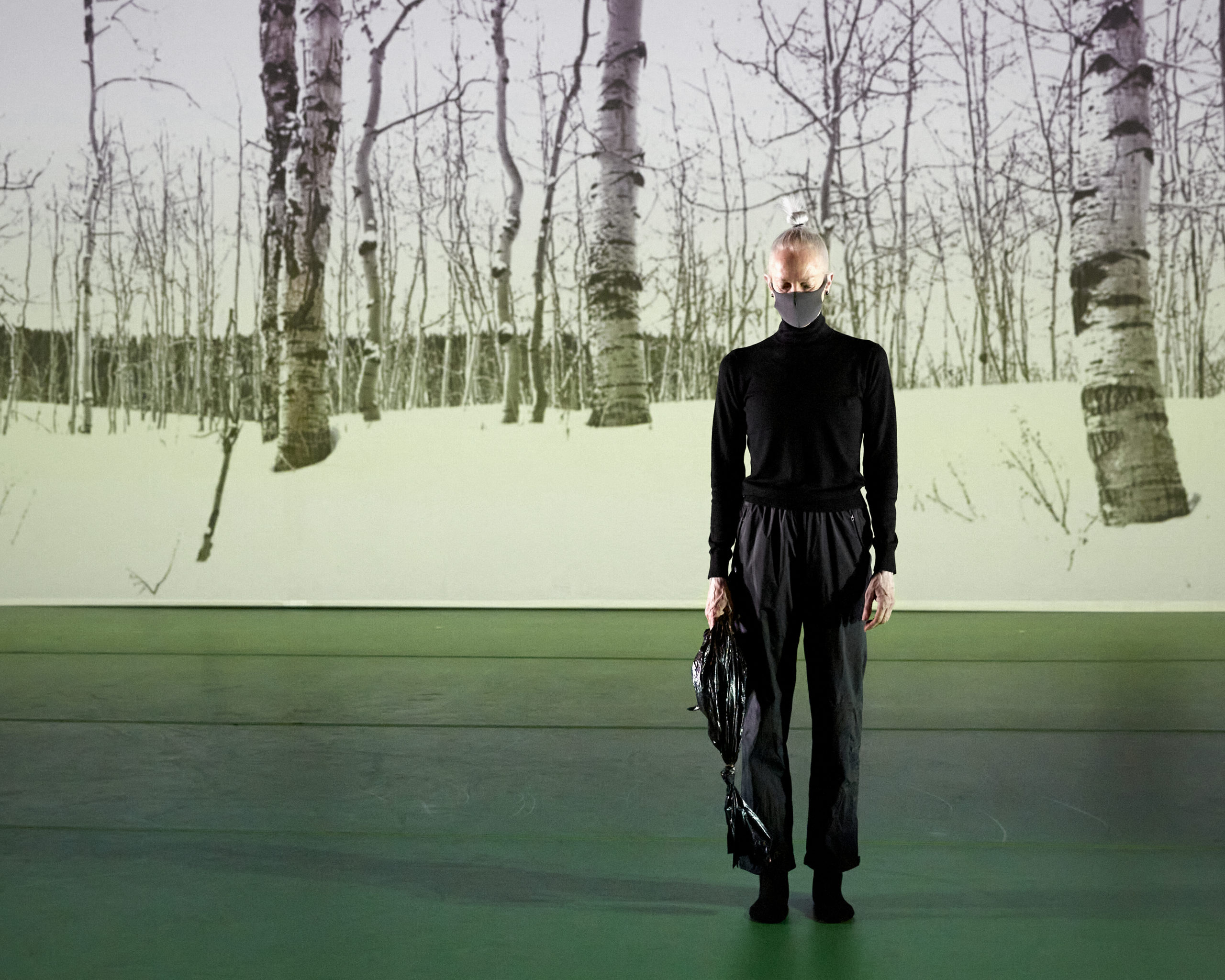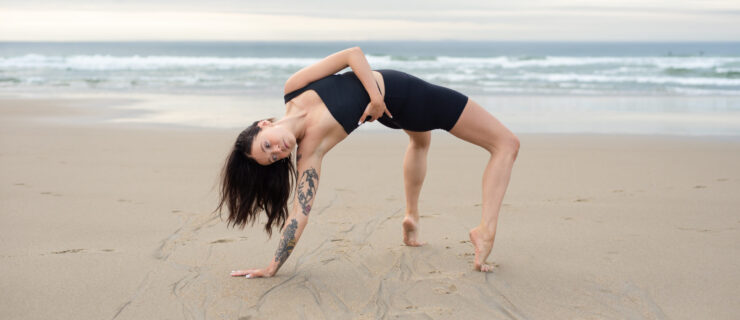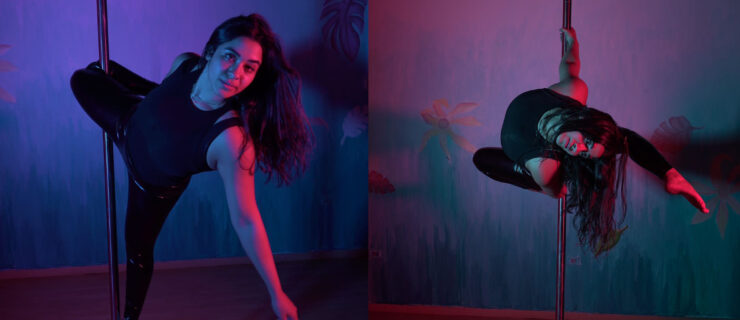Karole Armitage’s Diary of “A Pandemic Notebook”
Taking class with Baryshnikov in the room never fazed me.
It was the late 1990s and I was in college in Manhattan, where I took (and still take) classes at Steps on Broadway, and where Baryshnikov or any number of dance superstars might roll in. It’s not as though he wasn’t incredible; that’s a given! But when Karole Armitage showed up for Simon Dow’s class one day, taking her place at the barre along the Broadway-facing windows in Studio 2, with her signature spiky platinum pixie cut and wearing a pair of red sweatpants, I paid attention. She was already a legend in my mind—she had danced with Ballet du Grand Théâtre de Genève in the mid-1970s before switching gears and returning to New York City to join the Merce Cunningham Dance Company for five years. Her own choreographic debut in 1979—costumed in fur pants and performed in a high school gym—garnered her the nickname “Punk Ballerina.” And although she’d been directing and choreographing prolifically for some of the most prestigious dance and opera companies in Europe since the mid-’80s, she’d come back to the city to test the waters—not long after we first overlapped in class, she established the latest incarnation of her own company, Armitage Gone! Dance (AG!D), in New York.
Soon after that chance encounter at the barre, I holed up at the New York Public Library for the Performing Arts to catch up on her riveting early performances on grainy black-and-white videos. The founding members of the new company, and those who came after, were quiet riots, pulsing with rich interiority and laser-cut technique. As a child, Armitage split her time between the small university town of Lawrence, Kansas, and the wilderness of Colorado. And yet her directorial aesthetic so clearly reflected the energetic urbanity and diversity of New York City, as it still does today. Her movement vocabulary is at once calligraphic and off-kilter, formalist and influenced by street dance and pop culture. Armitage’s restless intellect propels the work to unexpected, unconventional places, but with the integrity and undergirding of rigorous research. The nonnarrative choreography is often rooted in art, fashion and science, as in her 2008 collaboration with theoretical physicist Brian Greene about string theory, in which I danced as a guest performer.
Although 2021 was the first year since its inception that her company didn’t perform live, it soon became clear that she was still hard at work. Early in 2022, I started seeing publicity materials for the New York AG!D season in March, which included such foreshadowings as “Karole’s first performance since 1989, likely her last” and “the final season of new work.” A turning point was at hand. As a fan of this insatiably curious iconoclast whose artistic journey presaged aspects of my own, I invited Armitage to shed some light on her inner workings in the weeks leading up to the performances of A Pandemic Notebook. The twist was that I asked her to keep a diary rather than participate in an interview. I offered her the proverbial mic. While she confessed to never having done anything like it before, she was game. What she has shared is a window into the logistics of putting on a performance, the wisdom gained through hard experience, and questions about what her future holds. I’m thrilled, but hardly surprised, to say that her incisive writing voice is every bit as compelling as her choreographic voice.
2.22.22
The date is auspicious. 2.22.22. Maybe this way I can get myself to start a diary. I’ll begin with quotes to explain why a diary is just not my thing.
As Joan Didion once wrote, “Our notebooks give us away, for however dutifully we record what we see around us, the common denominator of all we see is always, transparently, shamelessly, the implacable ‘I.’”
Author Helen Garner, who burned her notebooks, wrote in The Guardian in 2019, “I was so bored with my younger self and her drowning sentimental concerns that there was nothing for it—this [expletive] had to go.”
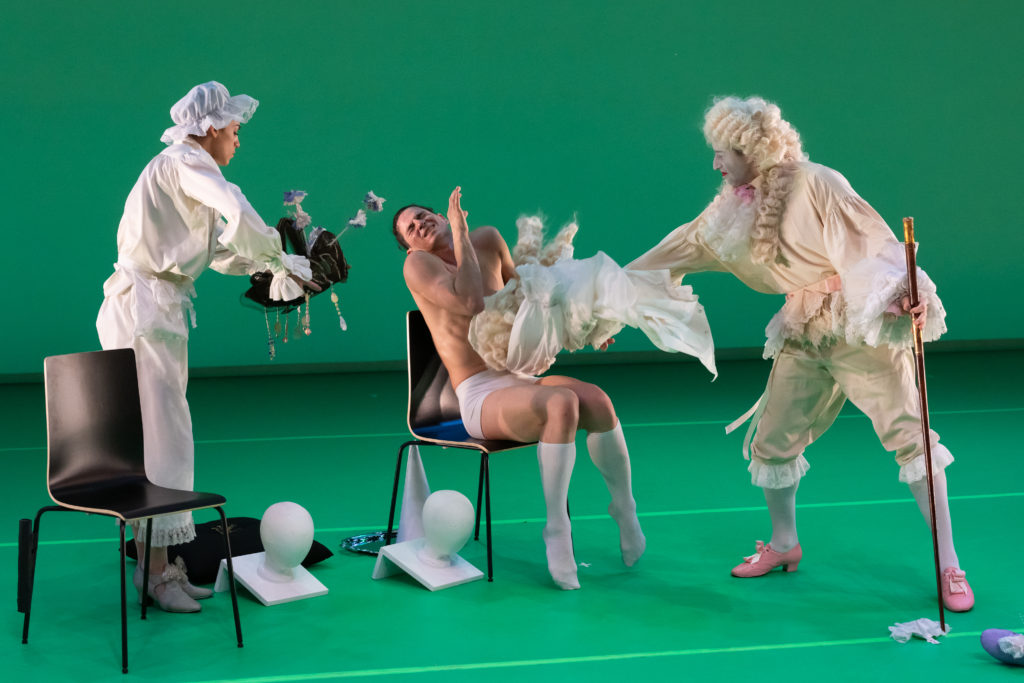
2.23.22
What do you do when someone in the subway asks you for money? My philosophy is to give to anyone who asks, because, as I see it, if someone is in the subway asking for money, they must need it. I keep dollar bills for that purpose. And on the subject of money, I finally faced up to buying enough COVID tests so that everyone can do a daily rapid test prior to rehearsals. The bill for the season is about $2,500. That’s hard to swallow, but it feels good to see negative tests line up as each dancer and our company class teachers send in the results. We always start the day with ballet class and then rehearse for six hours. We also spent a lot of money this year going into three dance bubbles, in order to create the work for our March season at New York Live Arts. A five-second commute is a nice feature of a bubble, as well as a company dinner. I invited some wonderful Italian friends of mine to become cooks for us daily. There’s nothing like having Italian food prepared by a real Italian unleashing the genius of Italian cuisine.
2.24.22
I read with interest that Mark Morris goes to the studio three times a week these days. Beato lui [“lucky him”]. That’s as far from my life as imaginable.
2.25.22
We’ve had fantastic classes this past week from former NYCB dancer Antonia Franceschi. I’m thrilled to see that she, like Paul Boos, who’s also one of our regular teachers and a former City Ballet dancer, has the willpower and knowledge to demand the highest level of aspiration from us in mind and body. This means aiming to master the technology of the body, and the musicality of that technology, while unleashing one’s personal imagination. That’s how I was raised and that’s what I believe in. I’ve had unwavering willpower in aiming for that over all these years. This rigor applies to all of it, from dance classes, to costume and lighting design, to the choice of music, to treating dancers and collaborators well. I believe in working only if I can provide a living wage in the form of a serious salary and planning every detail, so that everyone knows what to expect. But lately, I feel exhausted by these aspirations. There are so few who care about these things and keep the faith. There are so few who believe that in the silence of dance, that in pure movement, we can grapple with existential and spiritual questions, finding solace and connection.
2.28.22
Today we have a costume fitting with a wonderful artist and our wardrobe manager, Aaron Cobbett. The dress for our dance Beautiful Monster is based on the fabulous dress that Silvana Mangano wore in the Italian film La Strega Bruciata Viva, by Luchino Visconti. It was made by a great seamstress who teaches tailoring at a well-known university. However, something with the dress went completely awry. It hangs on dancer Sierra French’s body in a way that is pinched and corseted, particularly egregious given that the fabric is very stretchy. I spent hours and hours ripping it apart and resewing it by hand. But it is still lousy. It’s interesting how people can get an idée fixe in their head and not see reality. I learned long ago that what I felt while dancing or choreographing was not objective. I learned to mistrust myself. One must let go of one’s ideas and, with a very cool eye, examine the result.
“Rats and roaches live by competition under the law of supply and demand; it is the privilege of human beings to live under the laws of justice and mercy.” Wendell Berry
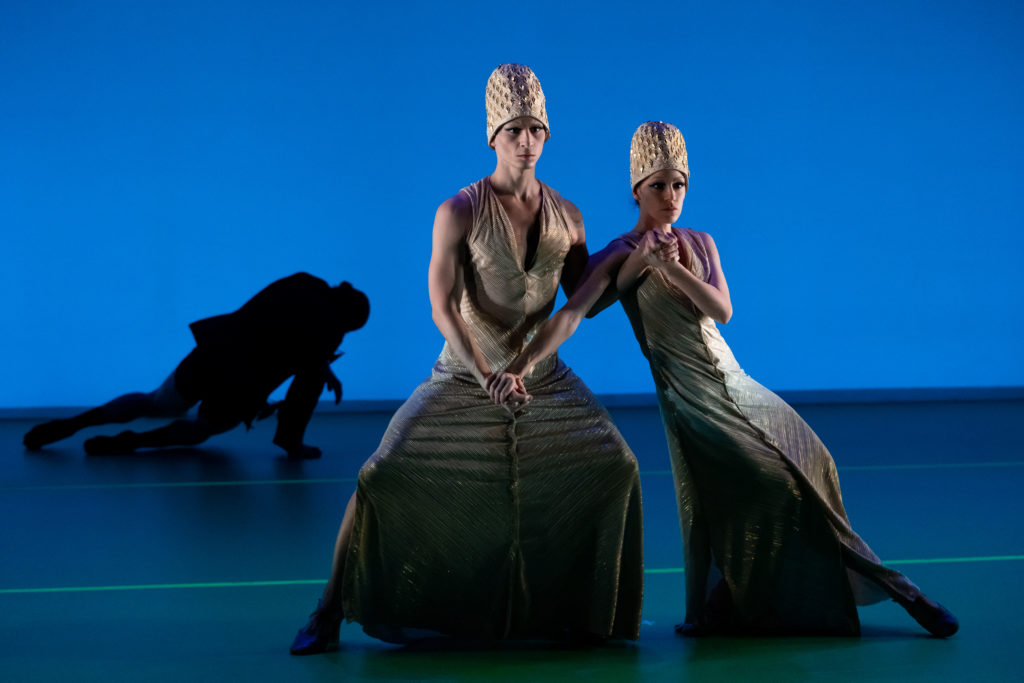
3.1.22
Yikes, it’s March. Two weeks till showtime.
It seems like costumes never get done. It’s so hard to find the simplest things, like socks that fit right, or socks with mainly cotton fiber, so they’re not slippery. Thanks to Amazon, all the old standby stores have gone out of business. Ugh! Not to mention the harm to the environment in fuel use and throwaway packaging. What does the Amazon phenomenon have in common with small dance companies? The biggest thrive and the smallest disappear. It’s pretty insane that dance companies with a $500,000 budget are competing with the dance companies that have a $25 million budget for precisely the same resources—the same very small pool of New York City patrons for dance, the same granting agencies and even the same studio space. I’ll never forget being thrown out of a studio a few years ago when a major ballet company needed extra rehearsal space for one of their special programs. Even though I had paid two months in advance, we were kicked out.
Although all of the dances we are presenting live have been filmed, one would think that means that the costumes are finished, but that isn’t the case. There are so many costume elements that must be adapted for quick changes. Snaps, Velcro, new rigging and myriad other extra bits to make things faster. Every second backstage counts.
3.2.22
A lot of challenges with the technology today. First it was the JetBlue website not working. But then it escalated into almost everything seeming to be hard to do. The most important is for the dance 6 Ft. Apart. The sound is generated by accelerometers taped onto bodies to create a soundscape in real time. I was having trouble with the coding, but that got solved thanks to the genius of sound engineer Agnes Cameron, who guided me via screen share from London. Now, for some reason, the feather that is part of the equipment isn’t communicating with accelerometers to respond to momentum. More to untangle. The more I work with hardware and software that isn’t human, the more I appreciate the extraordinary technology of the human body. Dancers are a trillion times more reliable than all the other stuff.
3.4.22
What will today bring? Worries about technology continue. Should I buy seed pods that we could mic as a backup, in case the receiver and accelerometer system does not fire up?
Apparently, The New York Times plans to review the show, which brings forth a dark dread. There is consistently a gargantuan gap between those reporters’ perceptions and mine.
3.6.22
Jock Sotohttps://en.wikipedia.org/wiki/Jock_Soto arrived in New York from his home in Eagle Nest, New Mexico. We had a great rehearsal. We made minor adaptations to make the dance work on the stage, rather than in the wilderness landscapes where the work originated. Frankly, it’s a lot easier to dance on marley than on snow, sand, lava and rock.
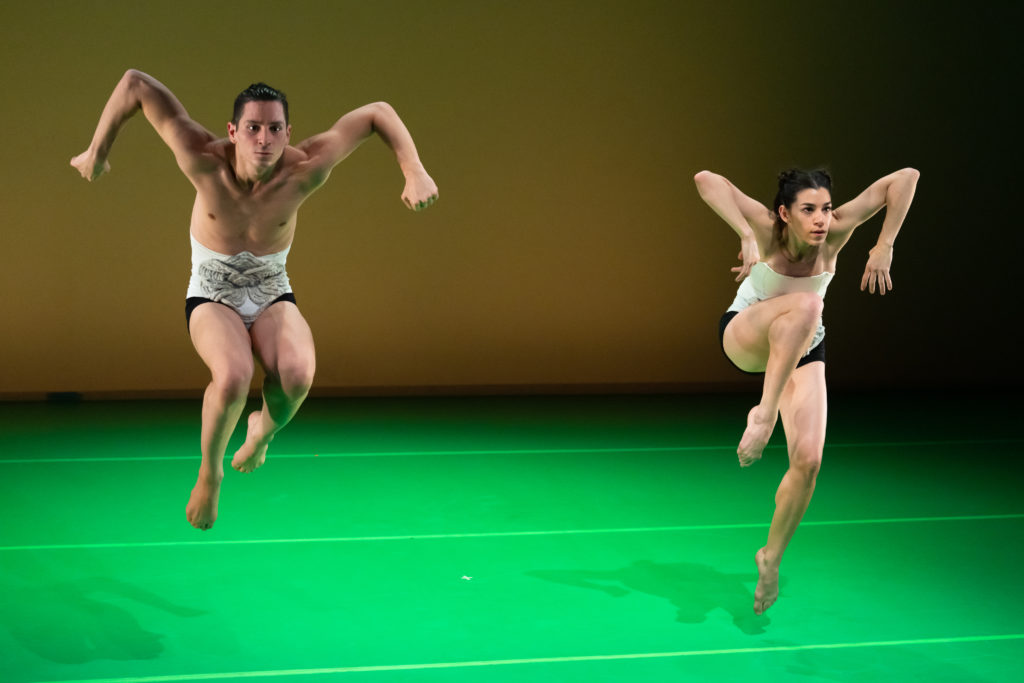
3.20.22
I forgot to write during the entire week we were at the theater for tech and performance. It’s always very intense when preparing and rehearsing for a season, given the requirements of fundraising, administration, publicity and marketing, logistics and the art itself. Last week, though, everything outside of the theater flew out of my brain.
So, to recap: As expected, I was preoccupied with the complicated jobs outside of my own dancing—lighting, projections, sound and new staging. There are always surprises. During tech, the Baroque wigs for Louis shed bobby pins dead center stage. How to deal with that? We came up with an amusing solution: Alonso Guzman, wearing the accelerometers, came out to center stage carrying a broom and dustpan and proceeded to do a violent shimmy, setting off cascades of sound while sweeping, a fairly comic and bizarrely existential moment.
As for my own dancing, I had one really great night out of four. The core company members, Sierra French, Alonso Guzman and Cristian Laverde-Koenig, were magnificent every night, as were the newer members, Isaac Kerr, Kali Oliver and Kara Walsh. There was only one day that I had no insanely stressful, urgent problems that had to be dealt with. On Friday, I could calmly take class, rehearse, warm up right before the show and then perform. I could feel the magic of playing with time and consciousness. That is the great gift of live performance, for both performer and audience.
I always kept in shape, at least vaguely. My body is my sketchpad. I’m generally dancing all day, every day, at a low technical level, to practice choreography. For 25 years, however, I stopped taking class in order to let some of my mild injuries heal. I did intense yoga and Pilates to realign. But this season I had to go back to ballet. Like an 8-year-old child, I worked like a fiend at the basics—placement and turnout—trying to acquire strength once again, so that at age 68, I could dance with some dignity. It worked out pretty well. My circle of dance life became complete. My first professional job was dancing in all-Balanchine repertoire in the company Mr. B directed in Geneva, Switzerland, at the Grand Théâtre de Genève in the ’70s. Though he wasn’t there all year long, he taught us class, staged the ballets, worked with the orchestra on colors and tempo, and took the “girls” (as we were called then) out to dinner for fondue. My circle became complete by dancing with Jock Soto, who very generously lent his years of experience as a principal dancer at New York City Ballet to our cause and was my partner last week during our season. Thank you, Jock!
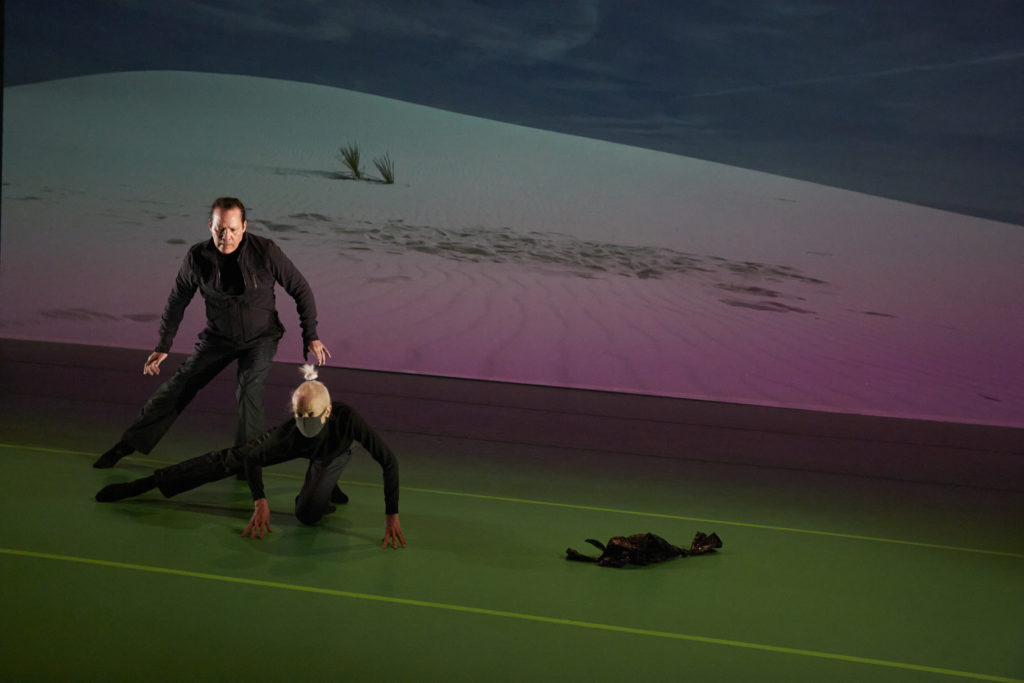
On the night of our last show, March 19, the craziest thing happened. The electric grid was struck by lightning. All power failed, except for one computer controlling the stage lights. The other computers, lights, fans, backstage lights, monitors, the projector and the sound went out. Luckily the sound came back pretty quickly. But nothing could get the projector going again. I had to improvise two spoken interventions to cover the time needed for costume changes so that we could finish the show.
At least half of the audience stayed in the lobby every night to cheer us on. Everyone loved the show, except some of the press, as expected. I do things that are new and different, that challenge dance culture and that aren’t yet accepted. I’m used to bad reviews because I was the first person to put a man in a skirt onstage as a matter of style and identity rather than drag, the first person to deeply entwine the technique and sensibility of modern dance with ballet and street influences. I worked in film, on Broadway and with pop stars, when doing anything outside of strict theater dance was taboo. I paved the way for others.
The lightning strike on the building also struck my brain. Self-producing is a no-win game.
Self-producing is the only option if one wants to maintain a company by having an annual season, because the very few institutions that commission or present dance in New York City are not in a position to present a company annually. Without institutional support there’s no way to reach an audience, get funding, get previews in the press, get into the cultural priorities of the moment, et cetera. The season we just finished encompasses 2.5 years of mostly very intense work and hundreds of thousands of dollars in expenses.
The difficulties are not just financial. Working with freelance collaborators means that the cherished minds you hope to continue to work with aren’t available and you have to spend weeks, if not months, finding a way to replace them. You perform for four nights and many who want to see it are out of town. There’s no way to actually get the message out that the performances are taking place. Our internet society is diffuse and without authority. Thus, there’s the great challenge of finding an audience, exacerbated by on-demand culture, the disappearance of representation in dance, a staid and unadventurous mindset in the dance world and continuing pandemic paranoia. We had a roughly 35 percent absentee rate in people not showing up who’d purchased tickets. I’m very grateful to everyone who bought tickets, to those who came, and am especially gratified by the unbridled enthusiasm that greeted us nightly.
Everything about self-producing is punishing, except for working with the dancers and communicating with an audience. That is exhilarating. I’ve done it, against all odds, since 1981, when I quit the Cunningham company. Self-producing means leading a life so perverse and out of balance that I just might not be able to face the preposterousness of it anymore, mainly because everything has become that much harder every year.
That would mean essentially letting go of my company now, and that is very hard. I’ve had an extraordinary group of dancers. Those who made up the relaunching of the company in 2004 when I returned from 15 years abroad, until today—yes, nearly 20 years—have been incredibly gifted dancers both creative and technically remarkable, as well as generous and thoughtful human beings. I am at peace with letting go, though it is not my desire. It seems like it is time to swerve, but in what direction I do not know.
I had a fulfilling end to my dance and choreographic life in New York City with this last season. We demonstrated resolve and resilience through the terrible challenge of COVID. I was able to pursue a rewarding experience as both a dancer and a choreographer, and even as a filmmaker. I will continue to work in opera, in film and live with dancers, if and when we’re commissioned to create. Our next project is a site-specific work for the James Turrell installation Twilight Epiphany, on the Rice University campus in Houston on April 22 and 23. Ciao! Enjoy life! Fight for what you believe in.
